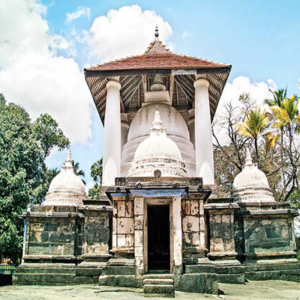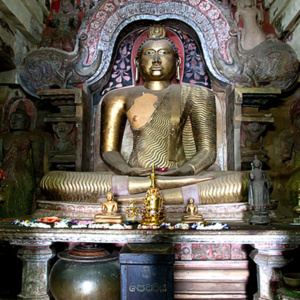The Gadaladeniya Vihara is an ancient temple that is situated in Pilimithalawa, Kandy, Sri Lanka. The temple’s history can be traced back to the 14th Century. Historical archives reports state that this temple was constructed in 1344 by King Bhuvenekabahu IV. The temple depicts Hindu art by a South Indian architect named Ganesvarachari. The temple’s constructions are depicted on a rock outcrop, above which this temple stands, by engraved inscriptions. It is obvious that this temple came about employing the Dravidian Architectural Style, which encompasses Sinhalese architecture from the Polonnaruwa period and Indo-Chinese architectural designs.
It its final stages the temple was an abandoned area until King Weera Parakrama Narendra Singha gave it over to Weliwita Sri Saranankara Thero, who pupils took over the upkeep and wellbeing of the temple over the years.
The Main Shrine has a unique feature in that the central temple is built entirely of sculptured granite. However, the two Shikharas that adorn a massive stone slab are built of normal brick.The Shikharas give a dagabo shape and is positioned above the Sanctum. Following the original construction of the vihara, may be sometime in the 18th or 19th century, a multi-tired and tiled Sinhala roof was included, which hid the flat roof and the Shikharas.









